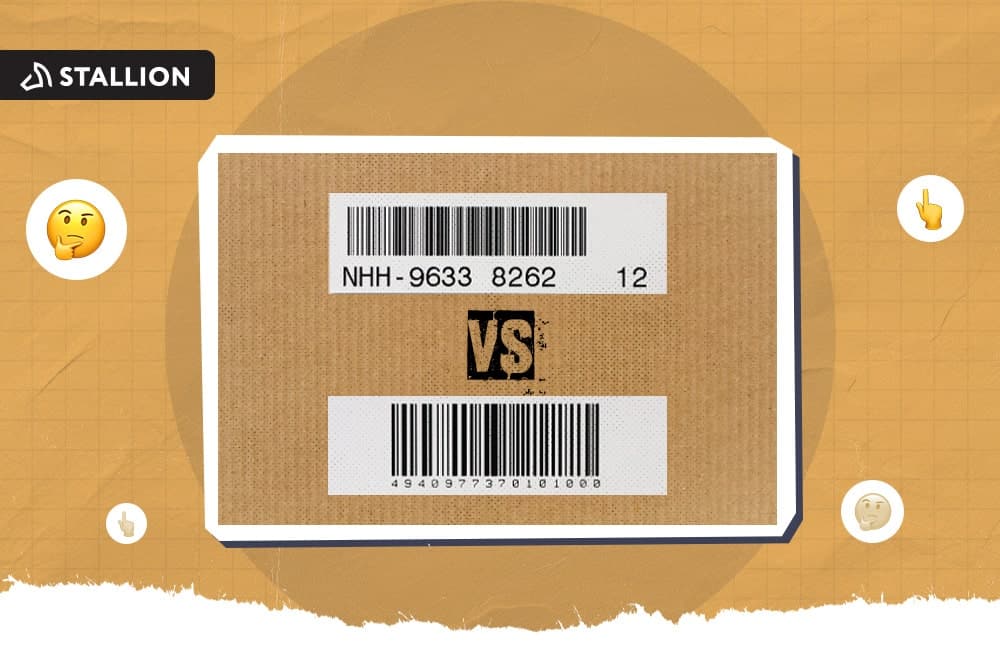
As a seller, you've likely come across the terms SKU and UPC. However, many don't know what they actually mean. Are they the same as barcodes? How do they impact businesses?
This guide explains the differences between SKU vs UPC, their meanings, and how to use both effectively to simplify your inventory, sales, and logistics.
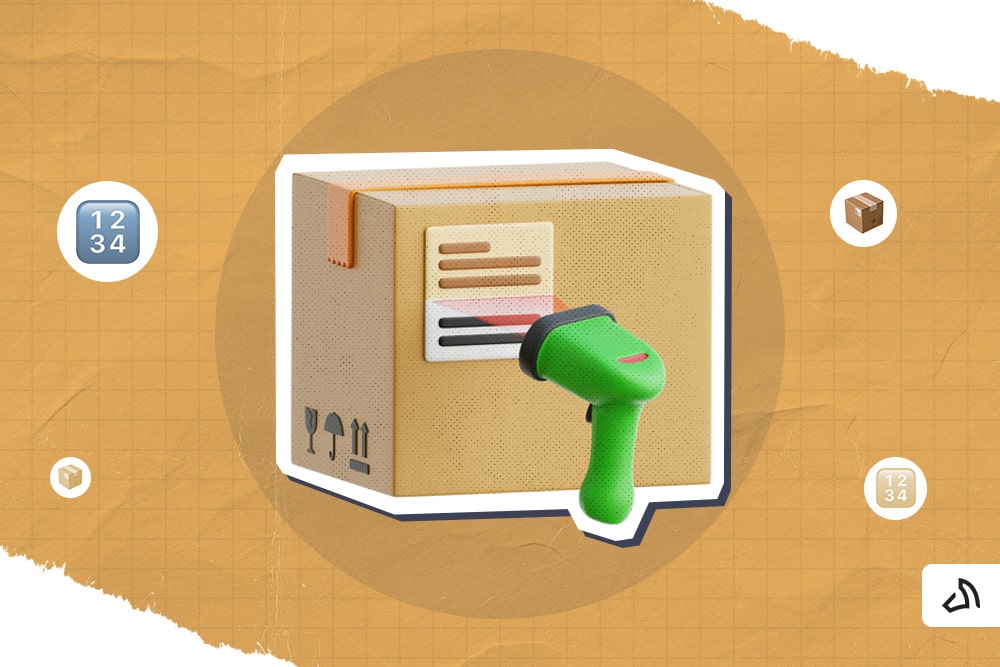
An SKU, or Stock Keeping Unit, is a unique alphanumeric code assigned to each product in your inventory. Sellers use SKUs to track products internally, making it easier to organize, reorder, and analyze inventory. You can customize SKUs based on product features like colour, size, or brand.
For example:
You are selling a red, medium-sized t-shirt. You can have an SKU like: TSH-RED-M.
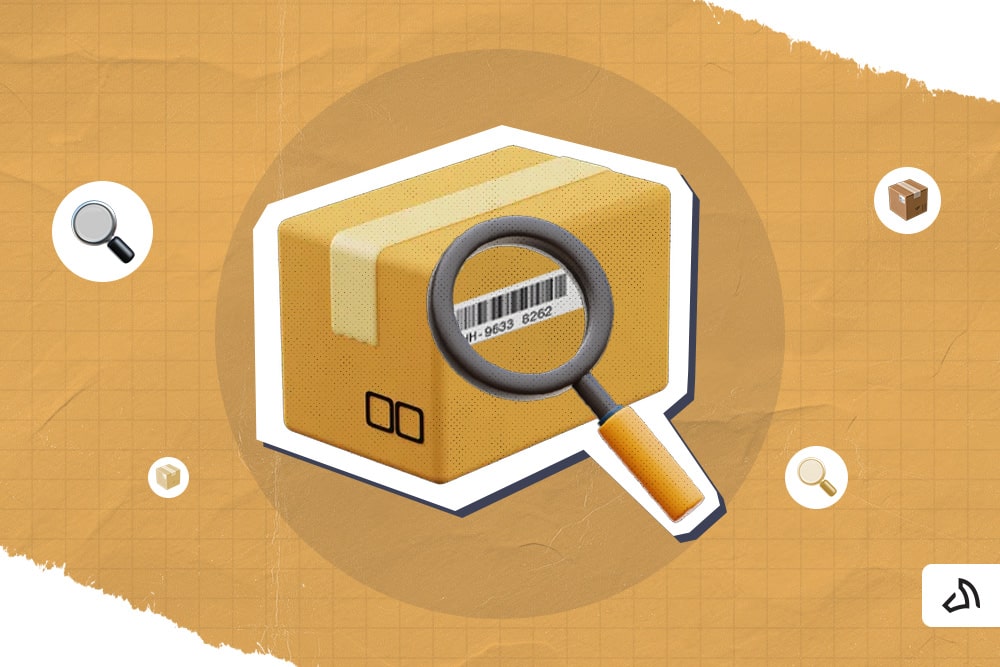
A UPC, or Universal Product Code, is a 12-digit numeric barcode that identifies a product globally. Retailers and online marketplaces use UPCs to scan and track items during checkout. Sellers must get UPC codes through GS1 Canada, the official issuing body in the country.
Unlike SKUs, UPCs are standardized and recognized by systems worldwide, making them essential if you plan to sell on Amazon, Walmart, or in retail stores.
For example:
The iPhone Lightning Cable has a product description "Electronics accessory sold in retail" and a UPC of 190198496911.
Here's the breakdown:
190198 – Manufacturer code (Apple’s GS1 prefix)
49691 – Item reference number (specific to the Lightning Cable product)
1 – Check digit (automatically calculated for barcode accuracy)
Important Notes for Canadian Sellers:
SKUs and UPCs are both related to barcodes, but only the latter are barcodes by default. A UPC number is a barcode that can be scanned by retail systems.
SKUs, on the other hand, are just text or alphanumeric identifiers created for internal use. That said, you can still generate a barcode image if you want to use SKU labels for scanning in the warehouse or POS systems.
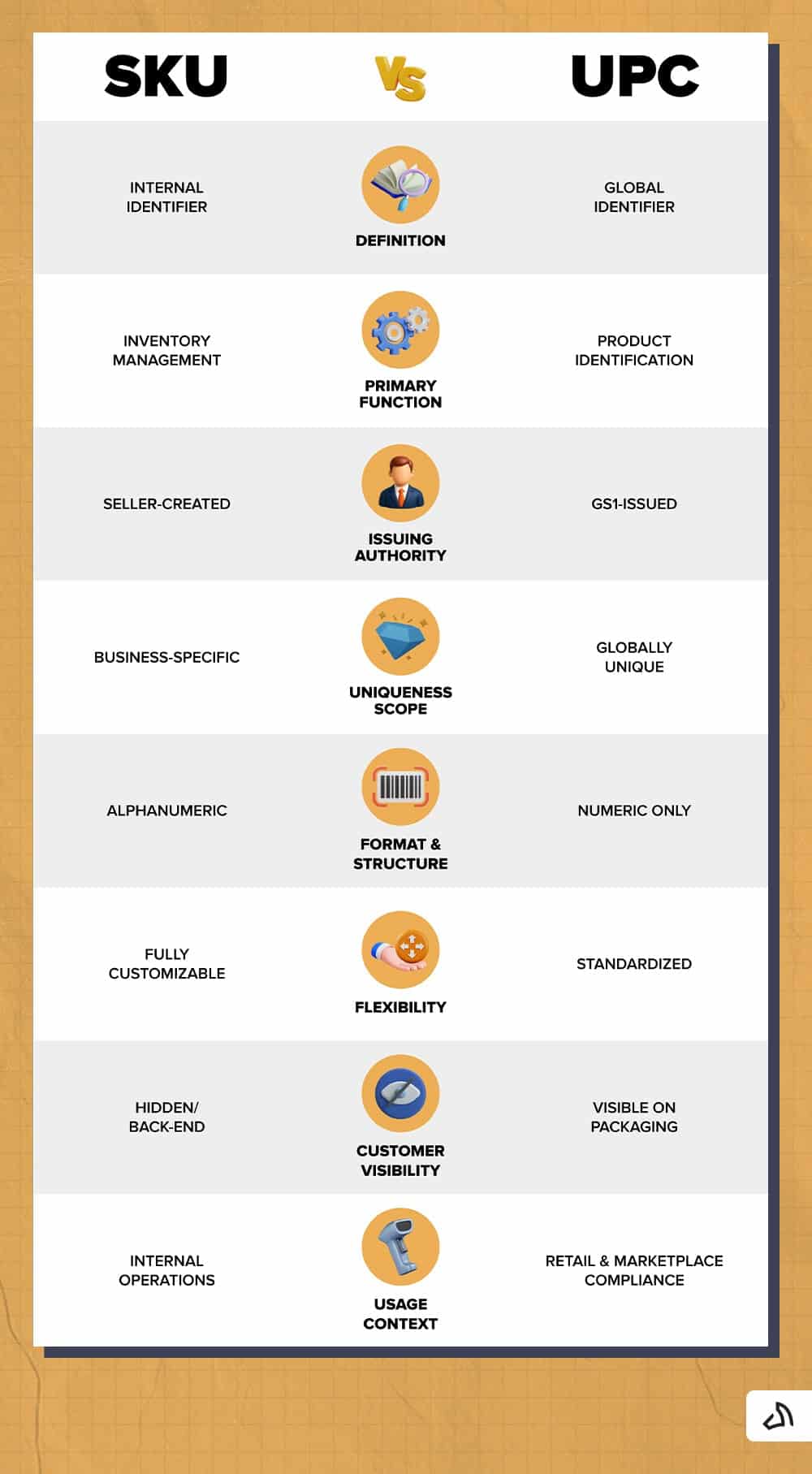
While both are used to identify products, they serve different purposes and are created differently. Let’s break down the key differences between these two product identifiers.
An SKU is an internal code created by a business to track and manage inventory. A UPC, however, is an external code issued by GS1 to identify products in retail systems.
SKUs help with inventory management, stock tracking, and reporting. Meanwhile, UPCs enable product identification and scanning in stores, online marketplaces, and throughout the supply chain.
SKUs are created in-house by the seller for internal inventory tracking. On the other hand, UPCs are assigned by GS1 Canada and follow global standards.
An SKU is unique within your business only. As for the UPC, it is a unique global trade item number standardized across industries.
SKUs are tailored using an alphanumeric, flexible format (e.g., 'SHOE-WHT-7M'). In contrast, UPCs follow a 12-digit numeric barcode format (e.g., "123456789012").
SKUs are highly customizable to suit internal needs within an inventory management system. In comparison, UPCs are not customizable and follow a fixed GS1-defined structure for external use.
SKUs are usually not seen by customers unless printed on packing slips or receipts. The 12 digits of the UPC GTIN are visible on product packaging and used during checkout.
SKUs are ideal for internal tracking, inventory audits, and sales analytics as opposed to UPCs. The latter is used as a unique identifier by retailers and suppliers. It is also required for selling through retail channels, marketplaces, and global supply chains.
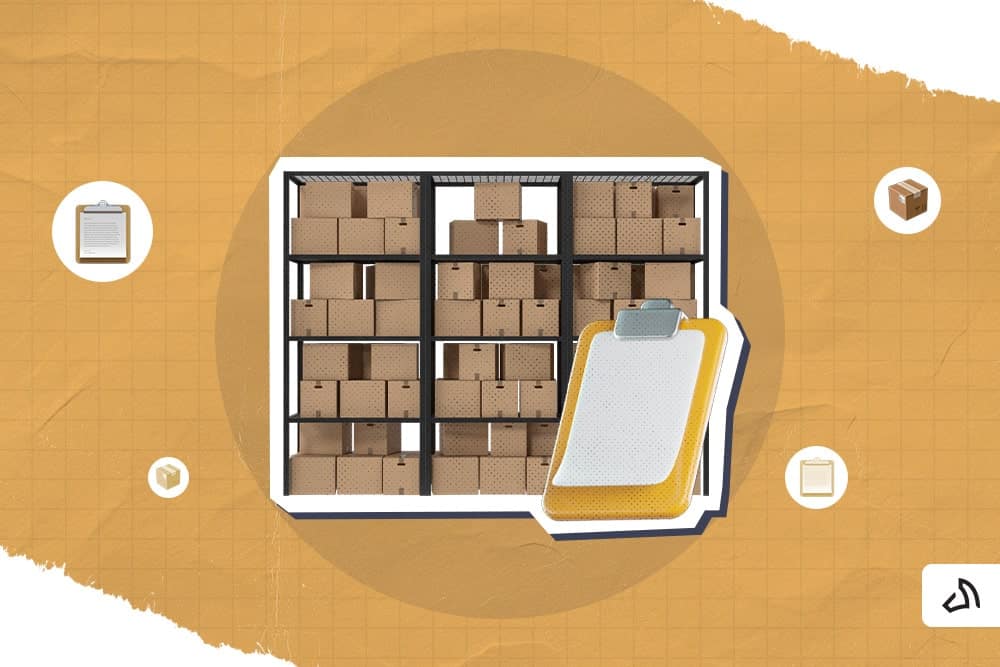
Managing UPC vs SKU codes properly can save you time, reduce errors, and help your eCommerce business grow. Here are practical tips for handling each:
Use a clear and logical SKU system. Include product details, such as the product type, colour, and size. For example: TSH-BLK-L
Use tools like QuickBooks, Shopify, or Zoho Inventory. They can automate SKU tracking to reduce manual work and mistakes, and make inventory management more efficient.
Group similar products under a parent SKU to keep your catalogue clean. You can assign each variant a unique SKU to make tracking more efficient.
For example:
SHOE-BLK could be the parent, and SHOE-BLK-8 and SHOE-BLK-9 represent size variants with their own unique SKUs.
Use your SKUs to analyze product performance by identifying which items sell best and which need restocking or discounting.
Ensure your staff understands your SKU system properly. They should know how to use a barcode scanner to handle inventory, orders, and customer questions accurately.
To ensure your UPCs are globally recognized, register with GS1 Canada. They will assign you a company prefix and help you create a valid identification number for each UPC.
Each specific product, including every size or colour variant, needs its own unique UPC. Avoid reusing the same UPC for different items.
After receiving UPCs, print the barcodes and add them to your product package. The codes are used during checkout and inventory tracking. Use a reliable label printer to ensure scannability.
Input UPCs into your product listings on Amazon, Walmart, or other marketplaces. This allows accurate product identification and makes your products searchable and scannable at checkout.
Regularly review your UPC assignments to avoid duplicates or mislabeling. Keeping your database accurate ensures smooth operations across platforms and provides valuable insights into product performance.
Understanding the difference between UPCs and SKUs is crucial for Canadian online sellers. To repeat, SKUs help with internal organization, while UPCs are essential for external selling and meeting global standards. By using both codes correctly, you can reduce inventory issues and run your eCommerce business more efficiently.
At Stallion, we’re more than just a shipping company—we’re a trusted 3PL partner for Canadian eCommerce sellers. Our job is to make shipping and order fulfillment easier for you.
Whether you’re adding new products, organizing your inventory, or selling on more marketplaces, we’re here to help. We take care of the behind-the-scenes work like storing your items, packing orders, and shipping them to your customers.
By letting us handle the logistics, you’ll have more time to focus on growing your business. You can easily ship to your customers regardless of where they are— sending across the country, to the US, or even internationally.
With Stallion as your partner, you can save money on shipping, deliver faster, and keep your customers happy.

Candy Rada is a dedicated professional with tons of experience in content writing for the shipping industry. As a literature degree holder, she excels in creating engaging content with strategies that enhance brand visibility. She enjoys playing with her cats, reading dystopian books, and joining trivia games in her free time.
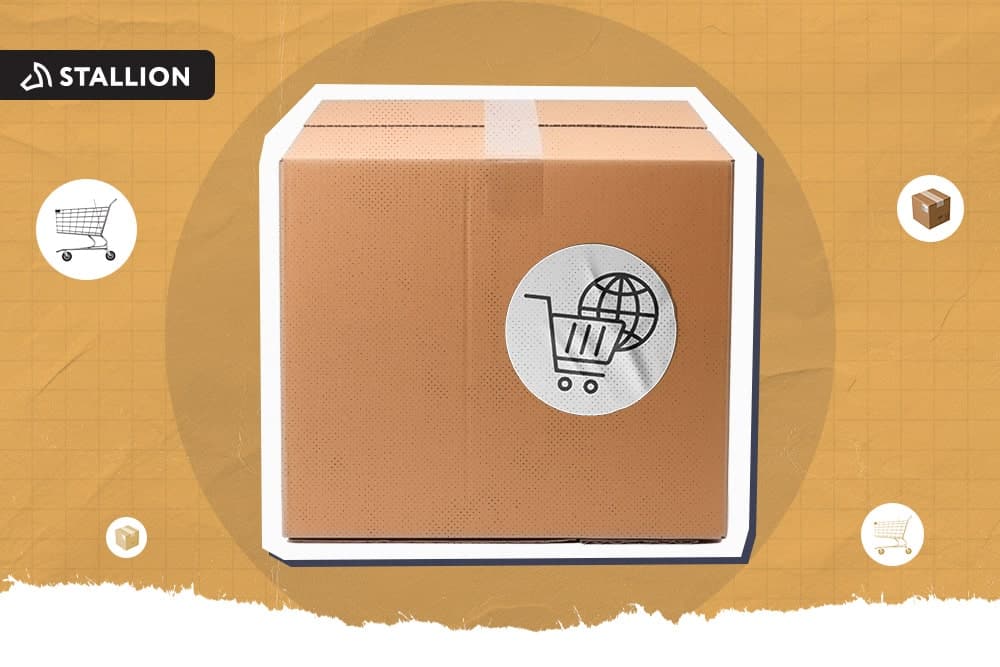
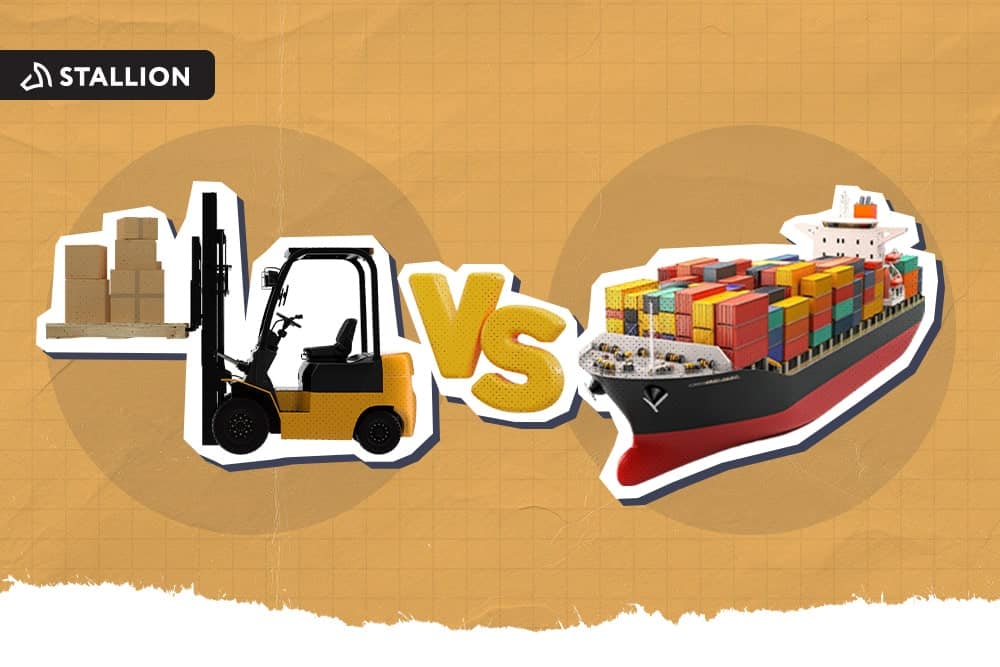

Can our fellow Torontonians relate?
-
#smallbusiness #business #entrepreneur #socialmedia #shipping #ecommerce #canadianecommerce #shopify #poshmark #b2b #saas #etsy #ebay #canada #canadiansmallbusiness #shoplocalcanada #entrepreneur
#toronto

Here’s your quick hassle free shipping from 🇨🇦 to 🇺🇸 as a business owner!
-
Any questions?! Leave them 👇🏻 and save this video so you don’t forget!
-
#smallbusiness #business #entrepreneur #socialmedia #shipping #ecommerce #canadianecommerce #shopify #poshmark #b2b #saas #etsy #ebay #canada #canadiansmallbusiness #shoplocalcanada #entrepreneur

Meet @drinkbenny a 🇨🇦 female founded energy drink brand! Instead of focusing on their products, they’re taking a unique approach by hosting in person events in different Canadian cities to offer an experience for their community 🧡
-
What are your thoughts on in person events? 💭
-
#smallbusiness #business #entrepreneur #socialmedia #shipping #ecommerce #canadianecommerce #shopify #poshmark #b2b #saas #etsy #ebay #canada #canadiansmallbusiness #shoplocalcanada #entrepreneur

Do you know the difference between DDU and DDP when shipping internationally 🌏 ?
-
Questions? Leave them below! 👇🏻
-
#smallbusiness #business #entrepreneur #socialmedia #shipping #ecommerce #canadianecommerce #shopify #poshmark #b2b #saas #etsy #ebay #canada #canadiansmallbusiness #shoplocalcanada #entrepreneur

Here’s a quick hack to save time from choosing multiple postage options
↪️ Turn on the lowest postage rate automation to save you time!
-
Questions? Leave them below! 👇🏻
-
#smallbusiness #business #entrepreneur #socialmedia #shipping #ecommerce #canadianecommerce #shopify #poshmark #b2b #saas #etsy #ebay #canada #canadiansmallbusiness #shoplocalcanada #entrepreneur
